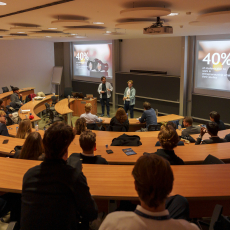What’s the best country to work as a woman?
According to The Economist's 2021 glass-ceiling index, which combines different data on working environments at countries from the Organisation for Economic Co-operation and Development (OECD), Sweden represents the best work environment, followed Iceland, Finland and Norway. On the bottom of the index is South Korea, followed by Japan and Turkey. The index suggests that progress to the top of companies is slow for women in most OECD countries – on average, only one in three managerial positions is held by a woman, while little more than one in four women hold seats on company boards.
The case for childcare
However, the factor I find most striking is the net costs of childcare (i.e., the cost of raising a child). The value differs significantly across countries: while in Italy and Germany childcare costs represent 1% of parents’ average wage, parents in Britain and New Zealand pay more than one third of their average salary to raise a child. However, it is in Switzerland where childcare costs are the most expensive: these represent 44% of parents’ average wages. Of course, the country has a favourable tax system, and its standard of living and wages are high – but so is such a percentage.
Challenges brought by the costs of childcare are becoming a significant work barrier for new families. Women are most affected, as they disproportionately take on caregiving responsibilities. This is still striking to me. Drawing back to the index, data shows that despite women’s tertiary education attainment being 6.8 points higher than their male counterparts, their participation rate in the labour market is still 15.6 points lower than men’s. So, why is it that although being more educated, women participate less in the labour market? Certainly, motherhood choices have an effect in this gap.
Raising the bar
Some claim that true equality in the labour market cannot be achieved until it is just as common for a dad to stay home with the kids as it is for a mum. But this also carries the question of who bears responsibility. In fact, whereas mothers in the OECD get the equivalent of 33 weeks of paid maternity leave on average, fathers get only 4.9 weeks. Is this fair though? Although some measures are being taken to close such gaps, there is still much to be done.
Which country would you choose to work as a woman?



